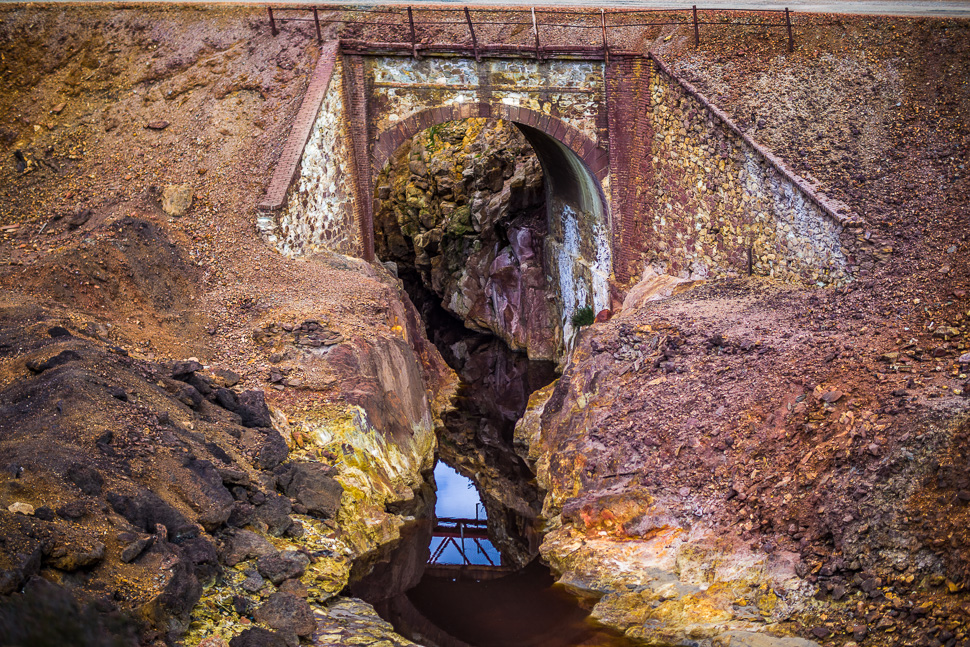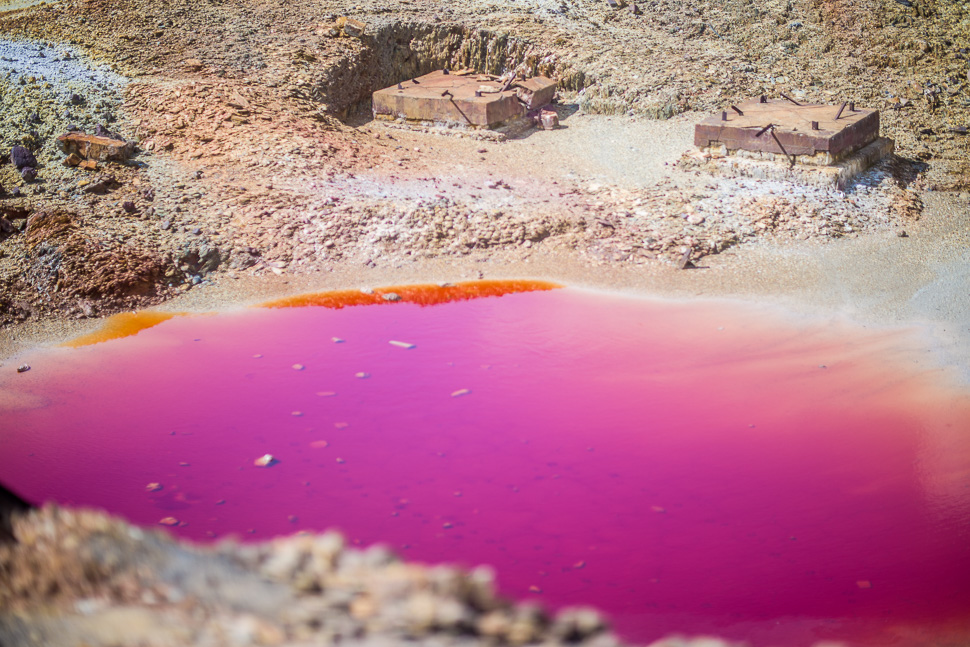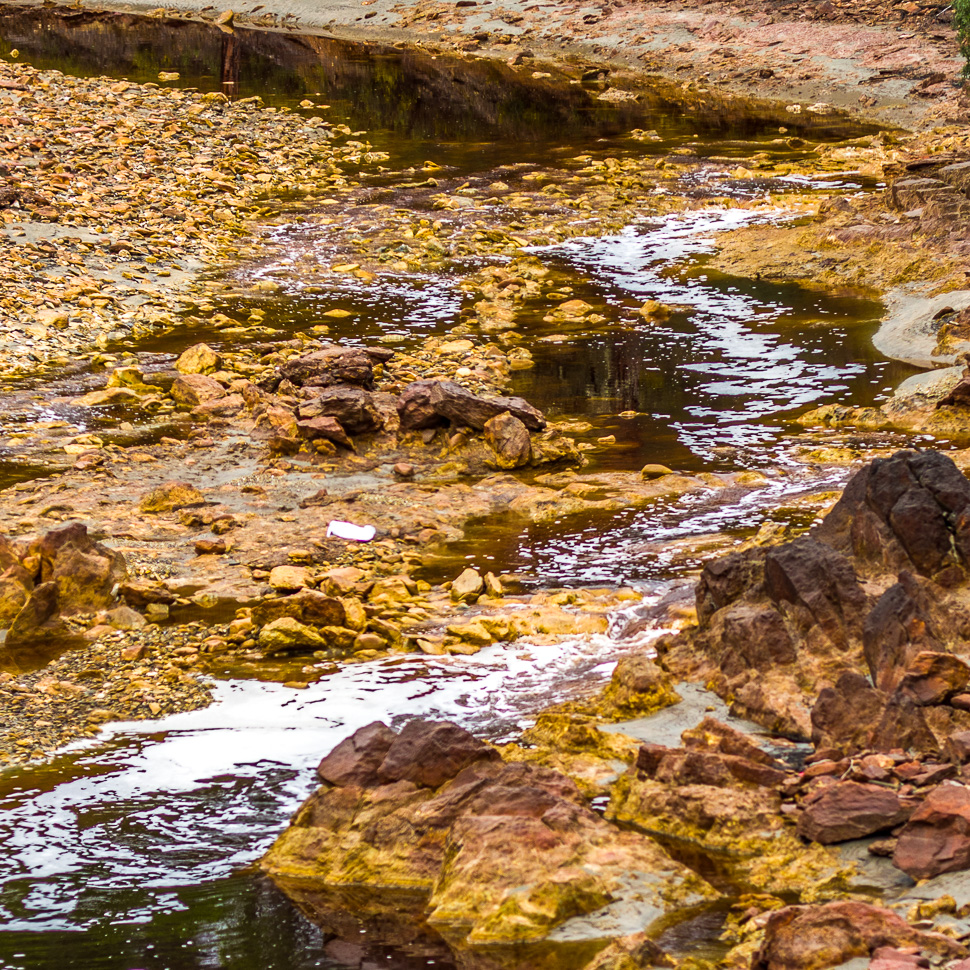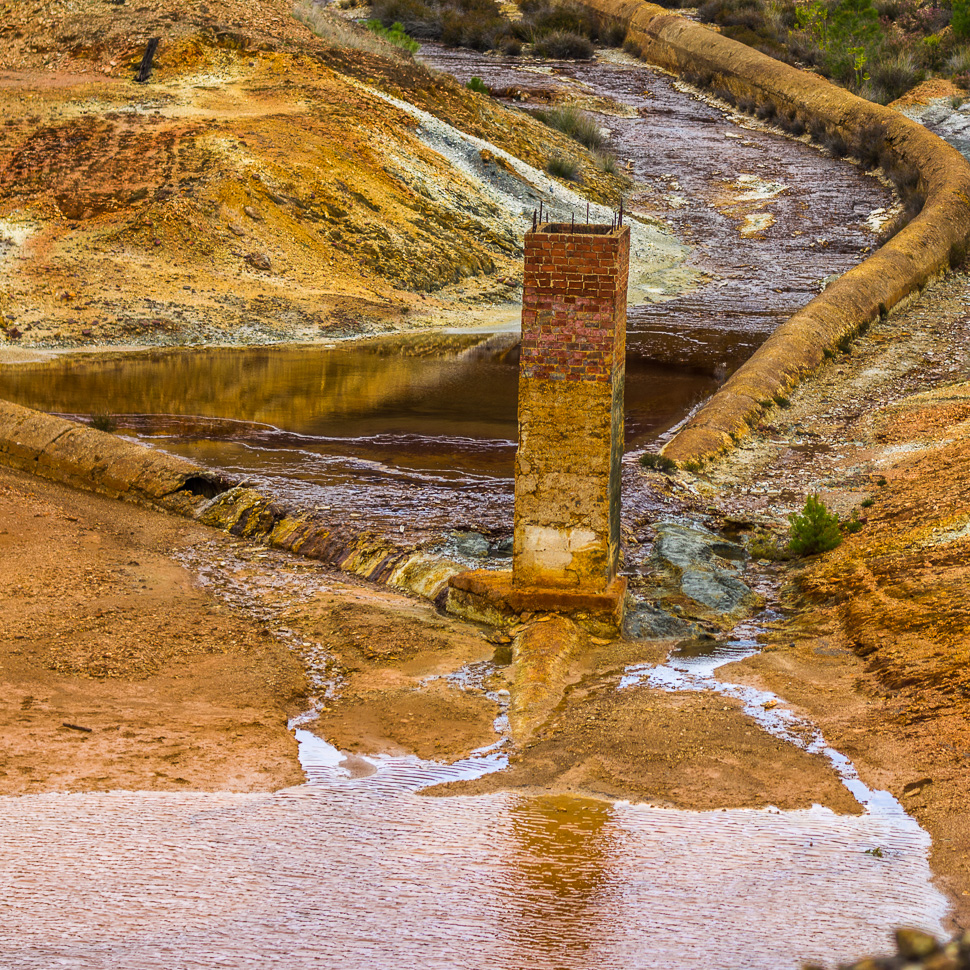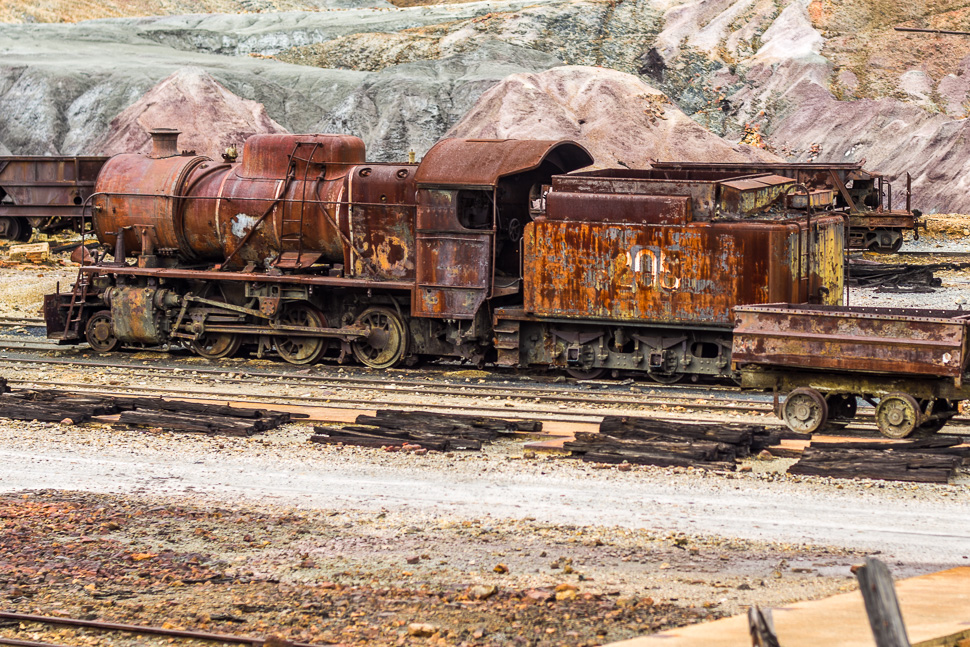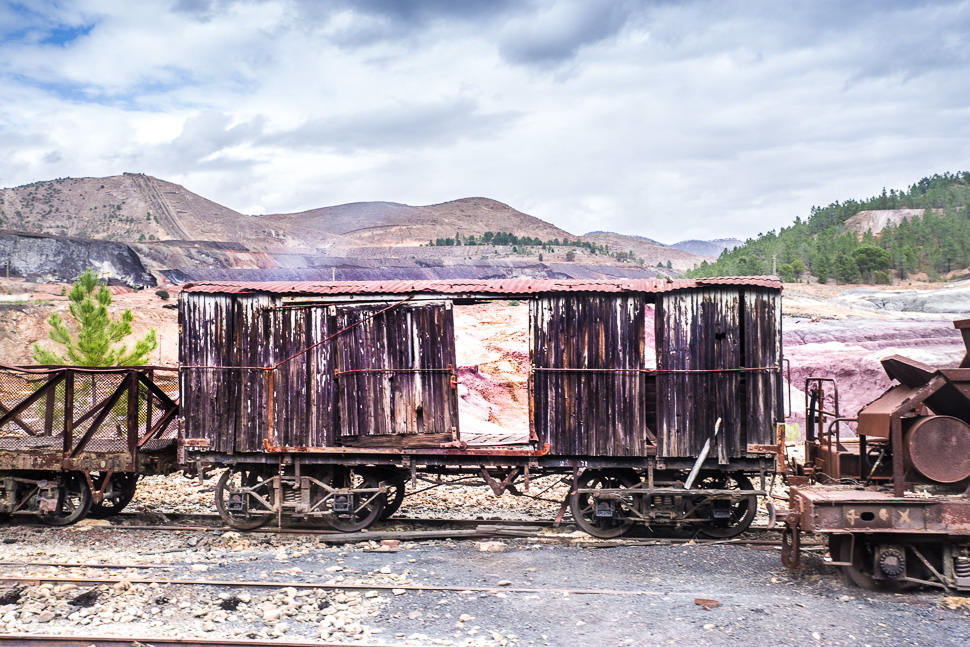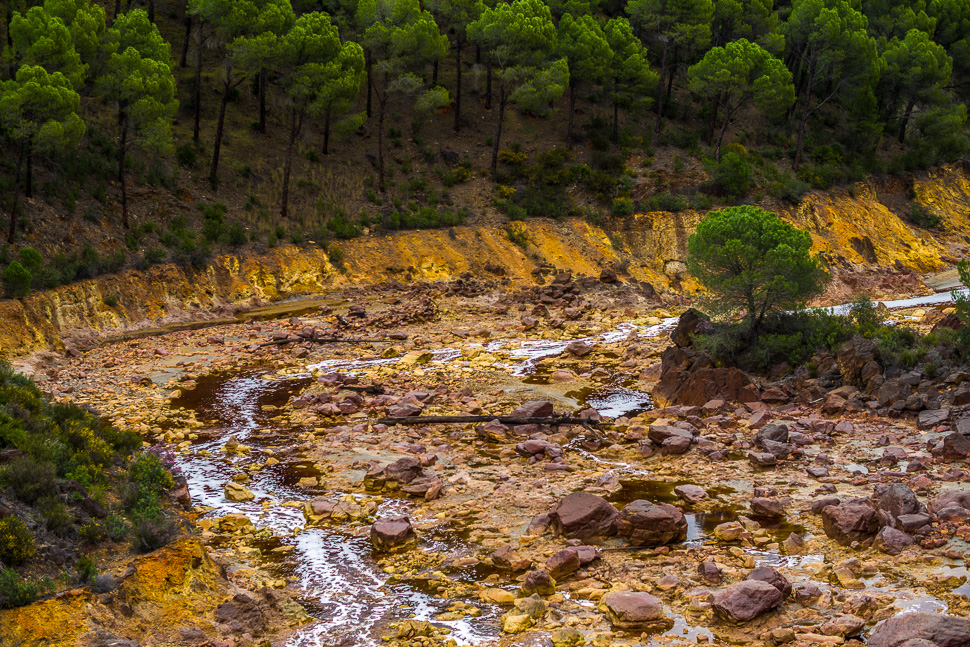One of the main attractions in Huelva are the mines of Riotinto. We waited two days for better weather before we went there.
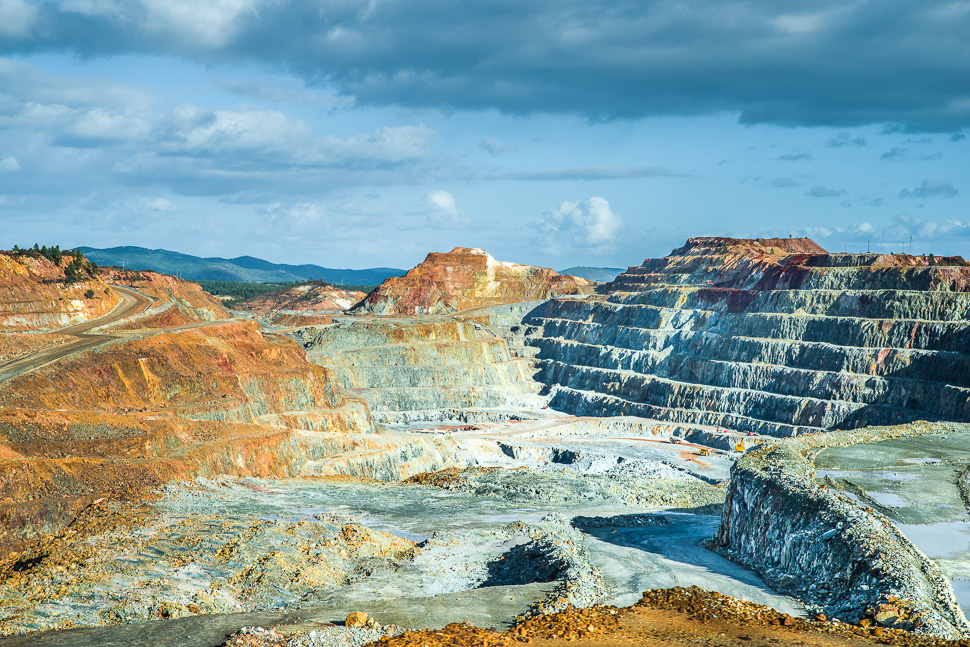 |
| Cerro Colorado |
The area of Riotinto is a zone of volcanogenic massive sulfide ore
deposit which has produced significant copper, zinc, lead, gold and
silver.
Cerro Colorado covers a surface of 4,2 km2 and is 230m deep. Mainly copper but also silver are mined here.
Corta Atalaya is the largest open-pit mine in Europe and was at one time the largest in the world. It is 1.200 m long and 350 m deep.
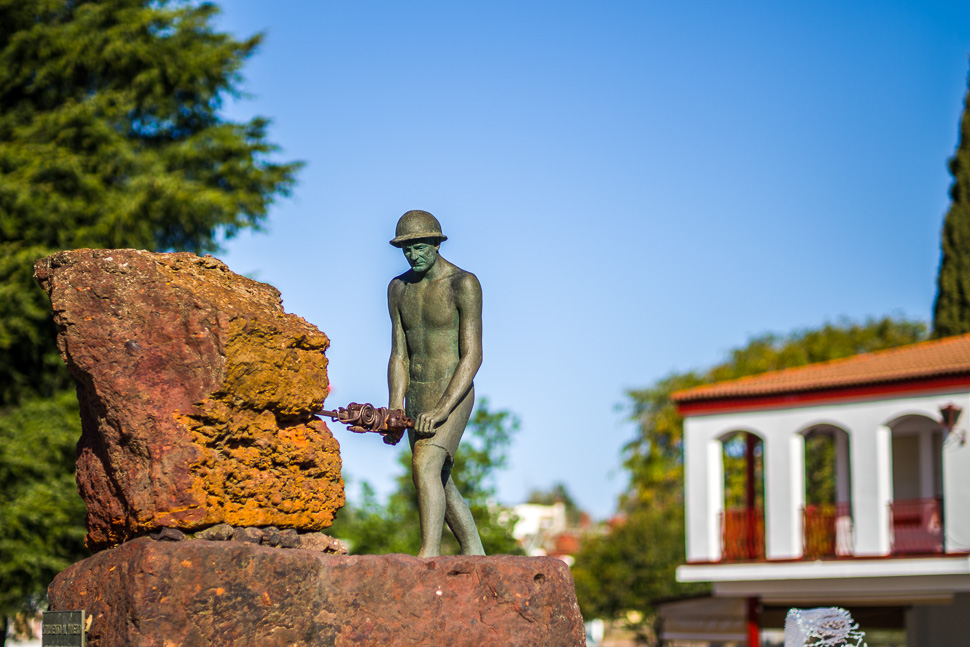 |
| Clearly a mining town |
The following pictures are all from our train ride through the mining area. The colors are like that in reality. The Rio Tinto river is acidic and contains metal which gives the water a redish color. As it had rained the day before, the water was more brown than red.
The open air calcinations, carried out until 1907, with the burning of hundreds of thousands of copper pyrites caused a very dense fog of sulfur dioxid which created acid rain that modified the soil’s ph level. The rocks and the landscape created are impressive with their weird colors and forms.
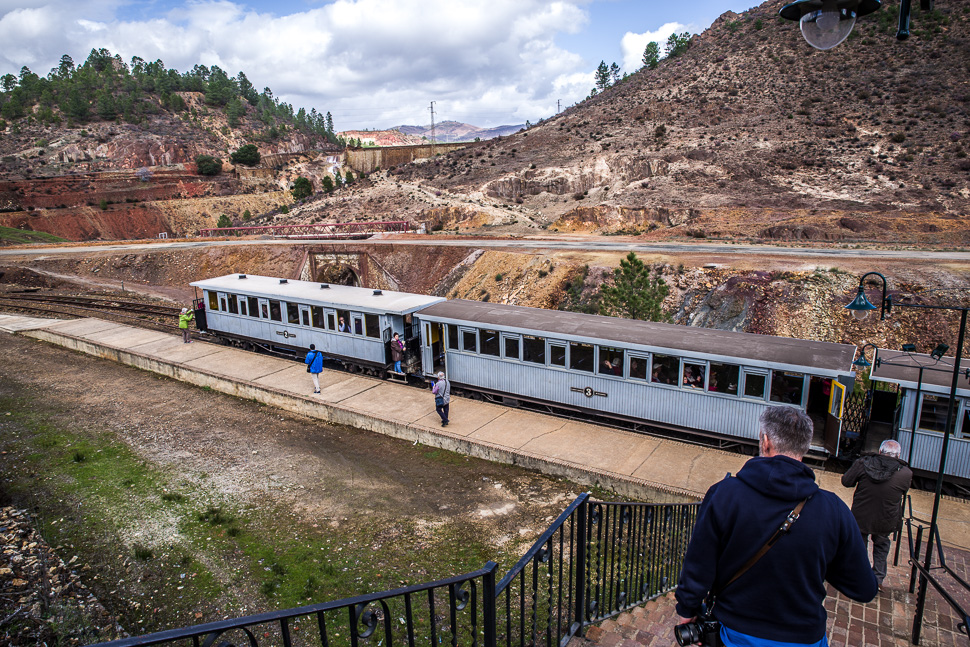 |
| train ride through the mining area |
 |
| our Spanish guide |
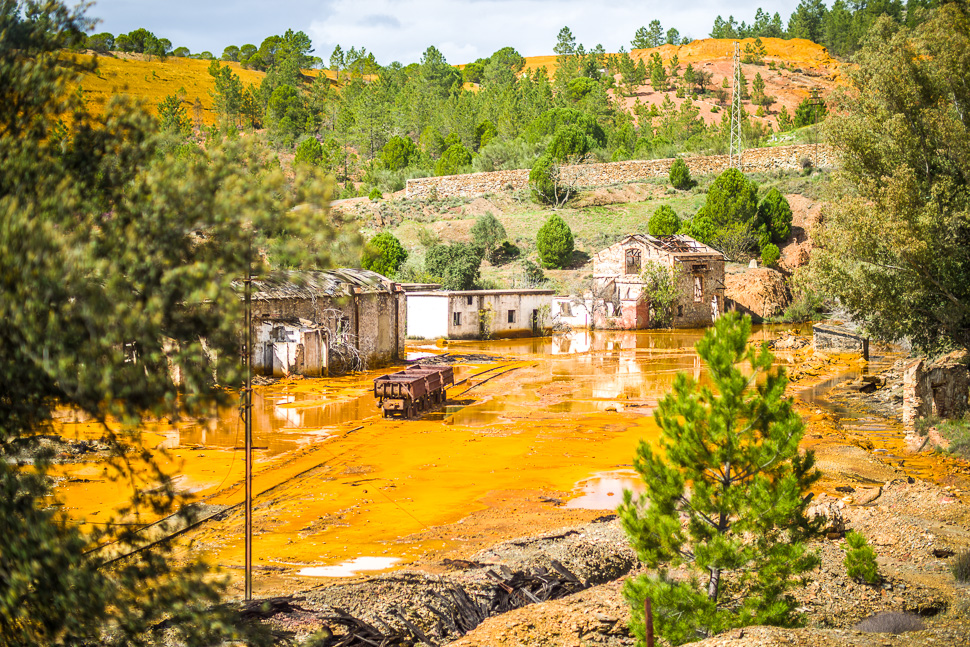 |
| former track coming from a tunnel leading to the 16th floor of Corta Atalaya |
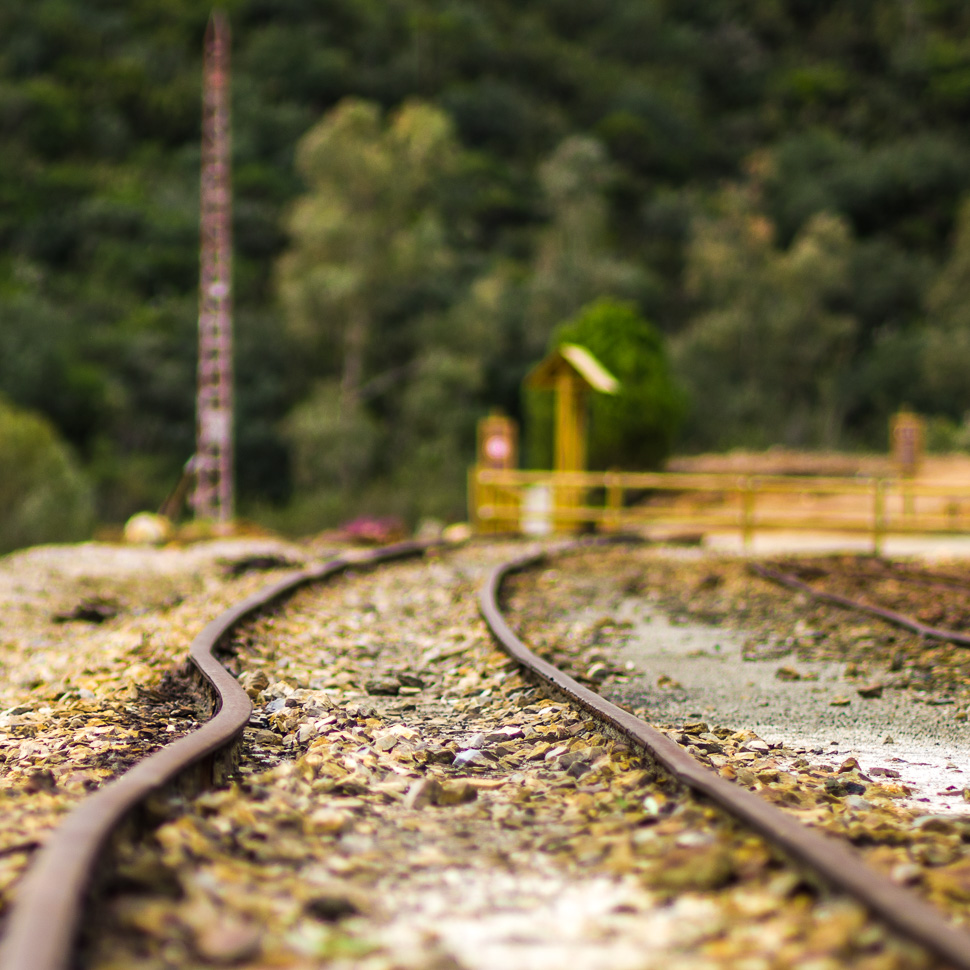 |
| end of the railway track |
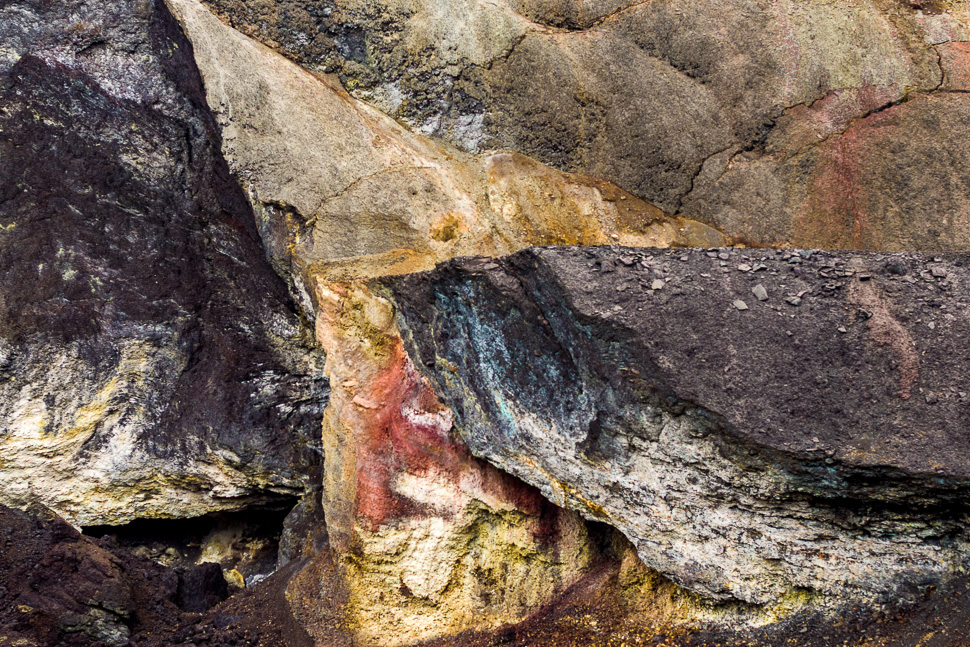 |
| colourful rock formations |
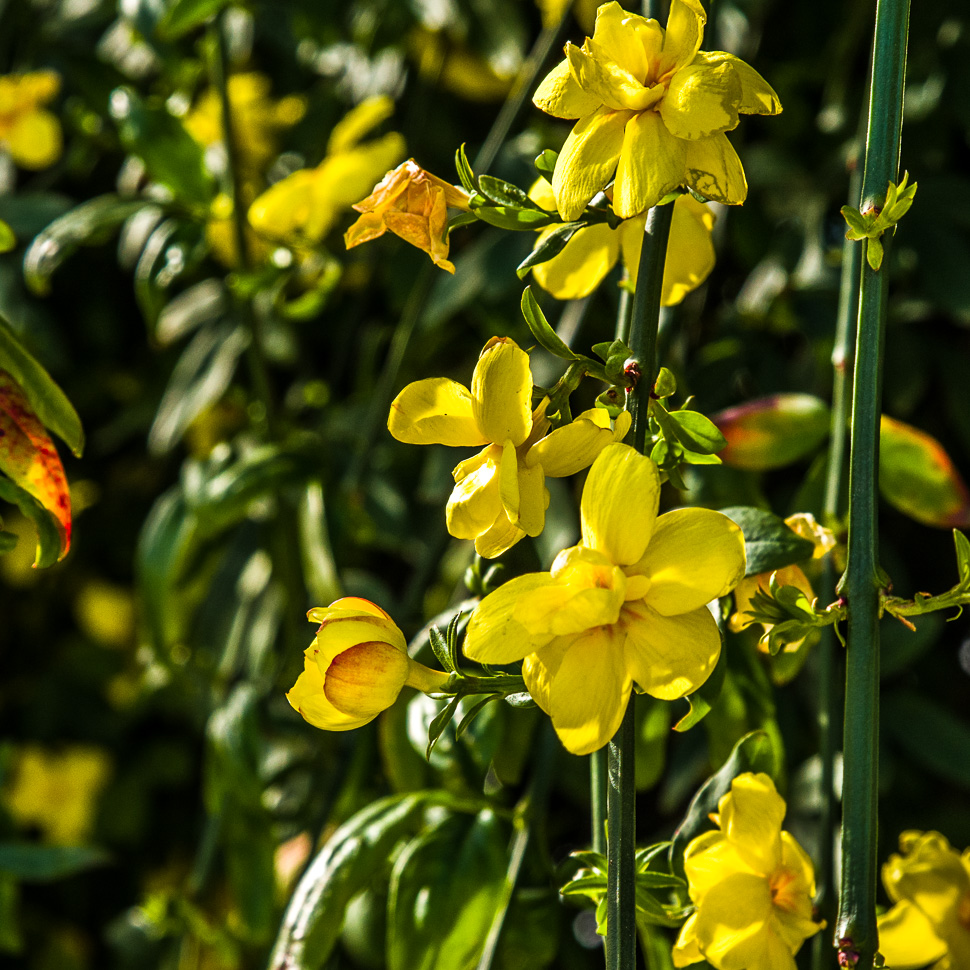 |
| Flower of the day |



